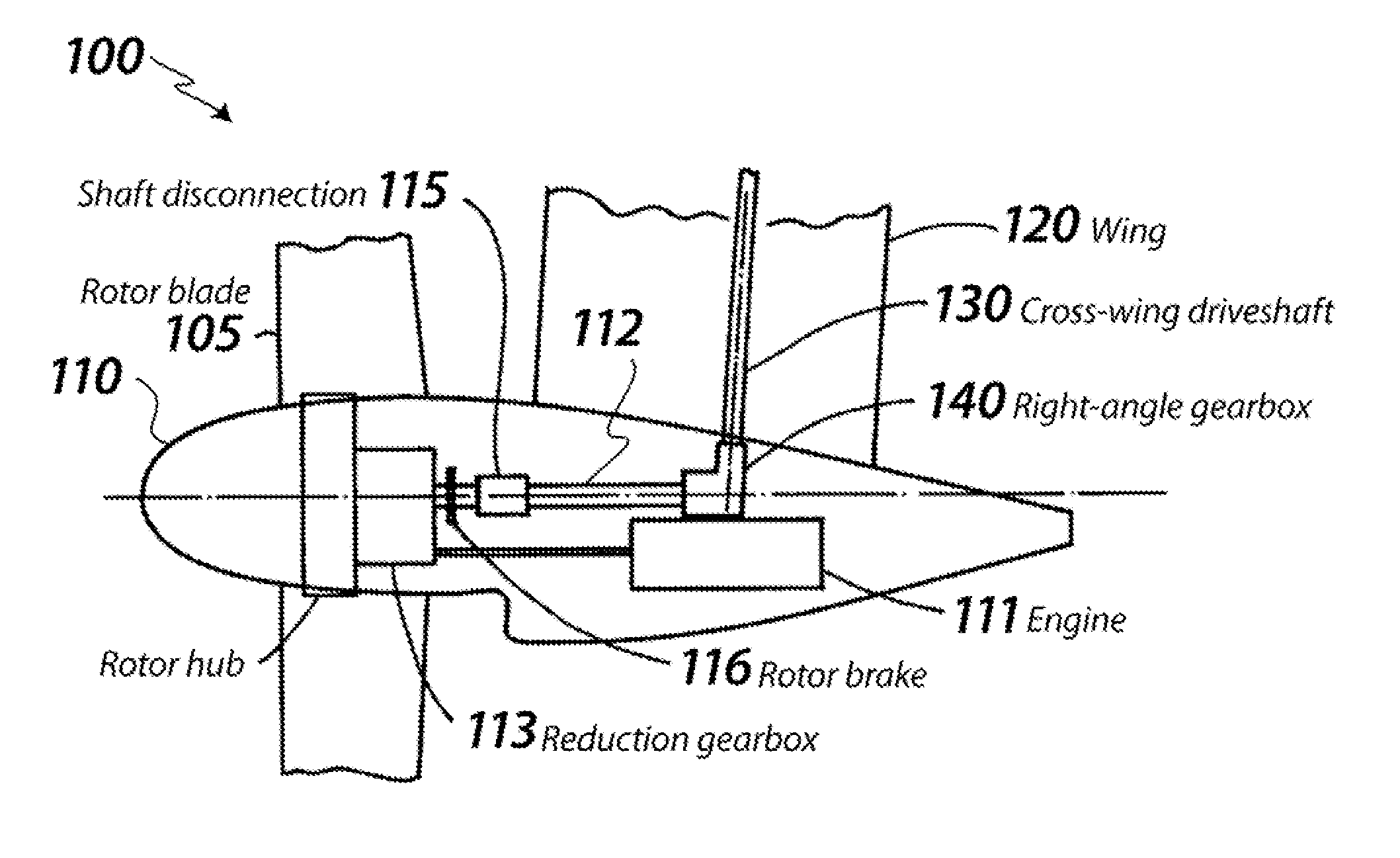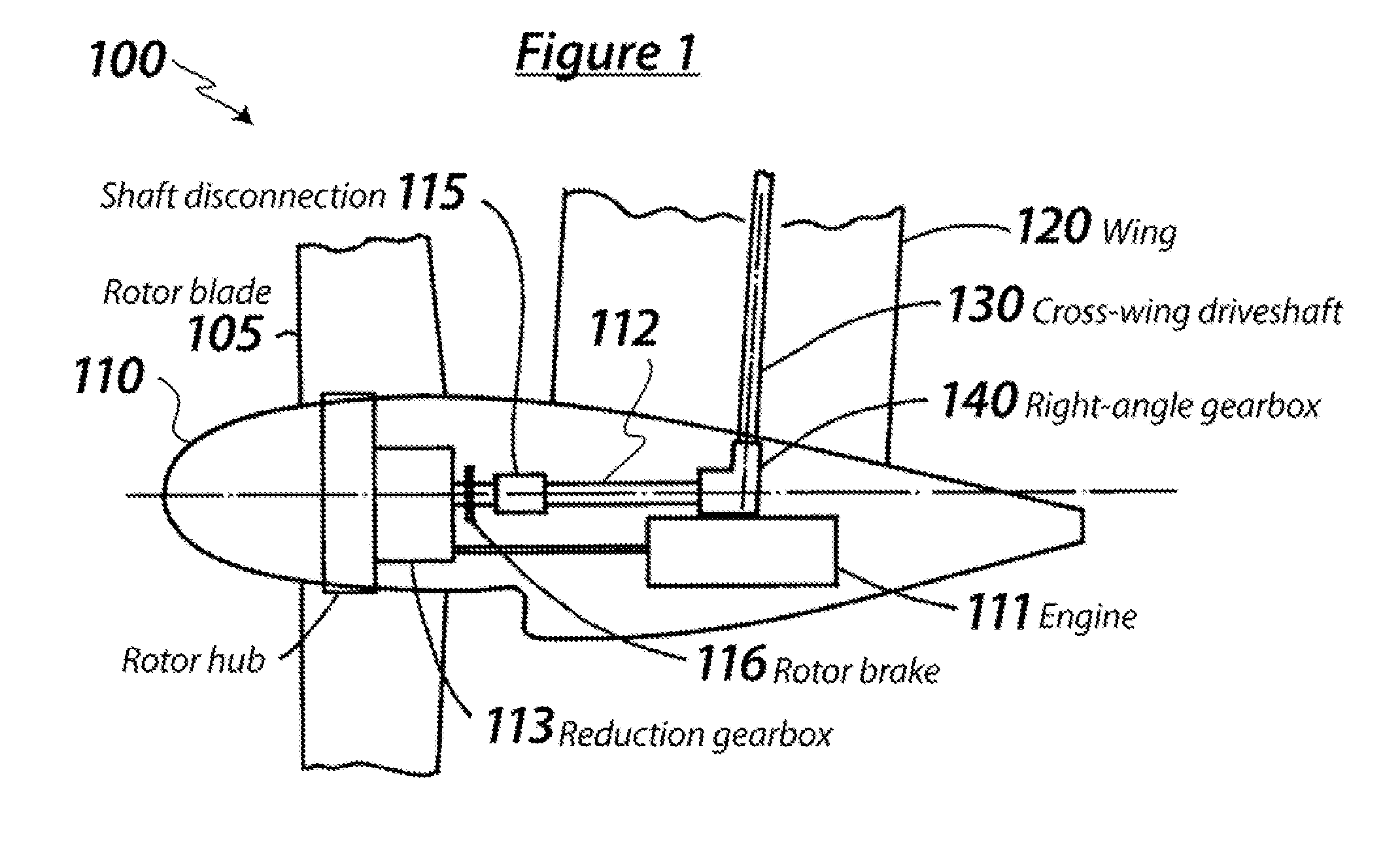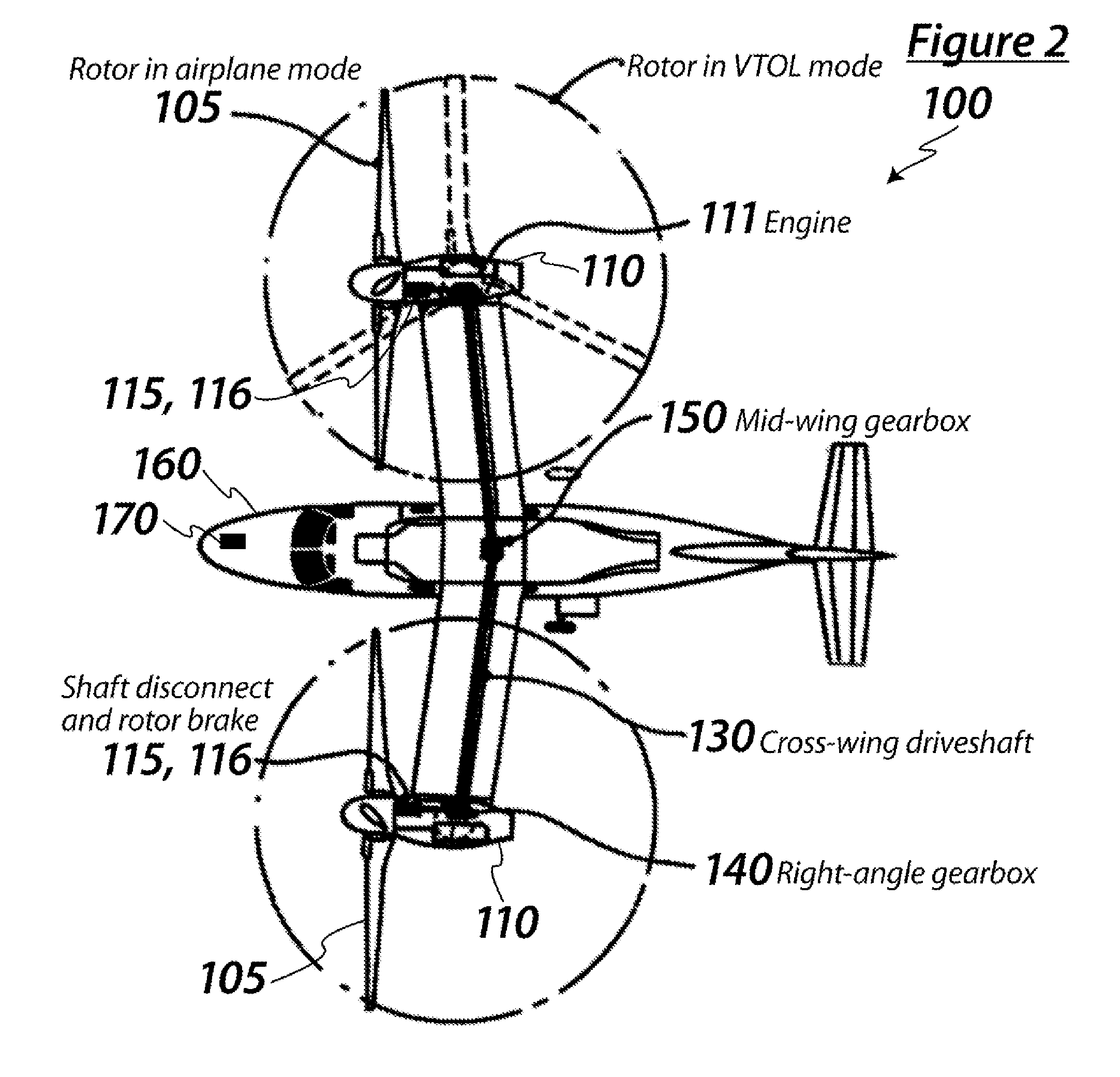Fail-operational multiple lifting-rotor aircraft
a multi-rotor aircraft and failure-operation technology, applied in the direction of rotocraft, vertical landing/take-off aircraft, vehicles, etc., can solve the problems of impending or catastrophic failure of the rotor system, its mounting or control, or the drive connection including shafting and direction-changing gearboxes, and the limited range/payload capacity of the tilt-rotor or compound aircraft, so as to prevent the failure of one rotor from interfering
- Summary
- Abstract
- Description
- Claims
- Application Information
AI Technical Summary
Benefits of technology
Problems solved by technology
Method used
Image
Examples
Embodiment Construction
Matrix of Flight Condition, Failure Type, and Corrective Action
[0019]The following is a matrix of prevailing flight conditions, failure type, the shaft disconnection decision and the resulting flight safety enhancement applicable to a two-rotor tilt rotor. This is an illustrative example, and the same logic would be applied to the drive arrangements and disconnection provisions for other aircraft configurations with different drive arrangements.
FlightShaftRotor brakeregimeFailure typedisconnectionactivatedResult of actionVTOL (1)Loss of one engineNoNoPower loss but no liftimbalanceVTOL (2)Loss of one rotor,N / AN / APossibly Catastrophicrotor control or(depends on possible shaftrotor gear boxdisconnect and transition toforward flight)VTOL (3)Failed cross-wingYesNoNo impact apart fromdriveshaft or relatedlack of power plantright angleredundancygearboxesAirplaneLoss of one engineNoNoPower loss but noMode (4)thrust imbalanceAirplaneLoss of one rotor,YesYes forContinue single-Mode (5)rotor ...
PUM
 Login to View More
Login to View More Abstract
Description
Claims
Application Information
 Login to View More
Login to View More - R&D
- Intellectual Property
- Life Sciences
- Materials
- Tech Scout
- Unparalleled Data Quality
- Higher Quality Content
- 60% Fewer Hallucinations
Browse by: Latest US Patents, China's latest patents, Technical Efficacy Thesaurus, Application Domain, Technology Topic, Popular Technical Reports.
© 2025 PatSnap. All rights reserved.Legal|Privacy policy|Modern Slavery Act Transparency Statement|Sitemap|About US| Contact US: help@patsnap.com



